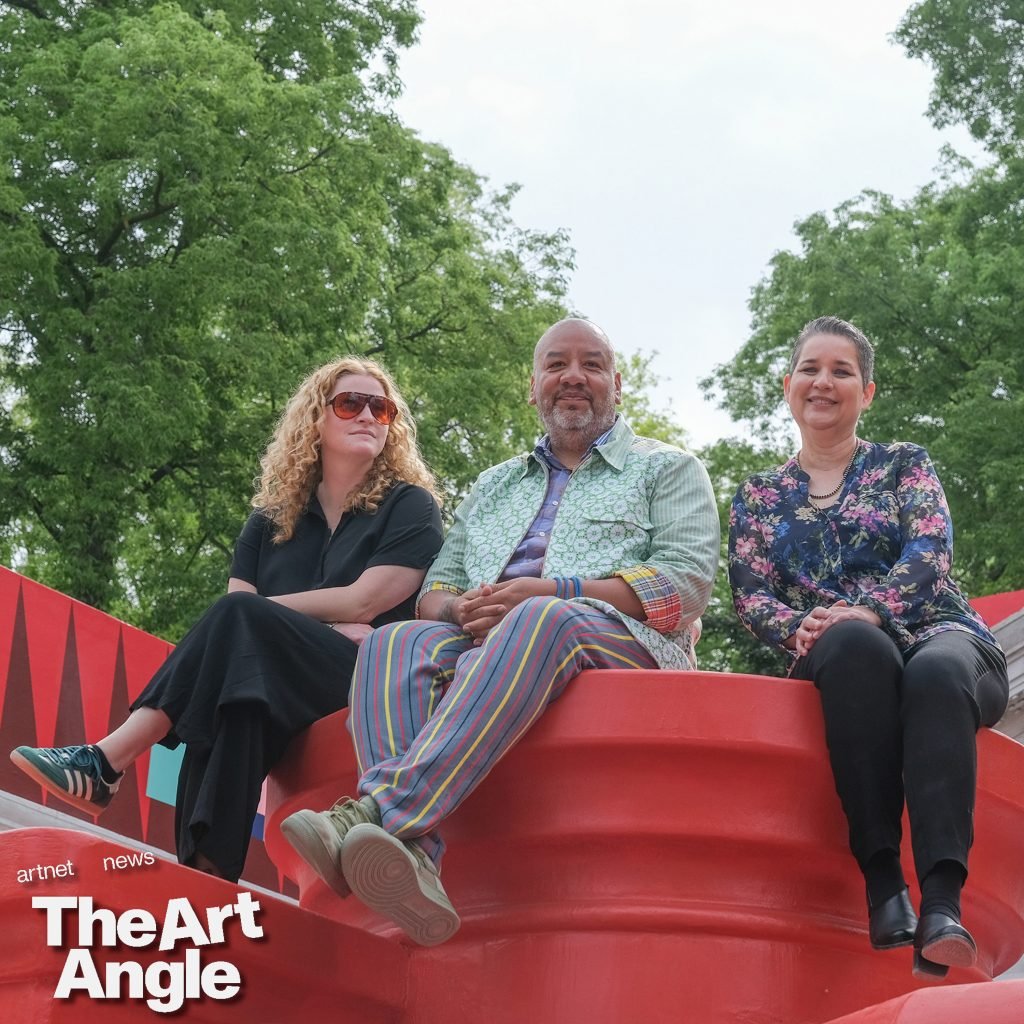The Art Angle
How Jeffrey Gibson Went From Almost Quitting Art to the Venice Biennale
Ben Davis speaks with the artist, who is representing the U.S. at the Venice Biennale.

by
Artnet News

Welcome to the Art Angle, a podcast from Artnet News that delves into the places where the art world meets the real world, bringing each week’s biggest story down to earth. Join us every week for an in-depth look at what matters most in museums, the art market, and much more, with input from our own writers and editors, as well as artists, curators, and other top experts in the field.
The best of Artnet News in your inbox.
As anyone who has been listening to this show recently will already know, the world’s largest and most closely scrutinized art event—the Venice Biennale— is now open in Italy. Every two years, different countries compete for the attention of art lovers and judges with individual national pavilions. For the 2024 Biennale, among the most talked about is that of the United States, which chose Jeffrey Gibson as its representative artist.Gibson is one of the most visible artists currently working, and with his Cherokee and Choctaw heritage, he is also the first Native American to represent the U.S. in Venice. Representing your country at the Biennale is among the highest honors that any artist might receive, and also among the most fraught. Even from this show’s title, which is “The Space in Which to Place Me,” you can tell that Gibson is pondering what national representation means.
Gibson has transformed the U.S. pavilion’s brick exterior with prismatic murals. Inside you find a spectacle that is clearly the work of vast amounts of team labor. There are 10-foot-high figures with ceramic faces draped in beads, ribbons, and large fringe; sculptures of large birds and human busts meticulously decked out in detailed rainbow bead work. Vibrant paintings that incorporate artifacts by unknown indigenous makers were sourced from estate and garage sales.
Meanwhile, a bright red central chamber contains one of the types of work that has become Jeffrey Gibson’s signature, a punching bag that he has transformed via intricate bead work into a hanging sculpture, this one featuring the vaunted phrase, “we hold these truths to be self-evident.” Whether that line refers to the truths of the Declaration of Independence that it is citing, or to the truths of the other art that surrounds it, you have to decide for yourself. Gibson’s pavilion climaxes with a nine screen video installation featuring a dancer performing a traditional Ojibwe powwow dance to a techno beat, the images ultimately breaking apart into kaleidoscopic abstraction in its mix of historical references and pop, and above all, in its color and warmth.
“The Space in Which to Place Me” is a fine introduction to the themes that define Jeffrey Gibson’s career. In the lead up to the opening, host Ben Davis spoke with him about his long road to the Venice Biennale.




